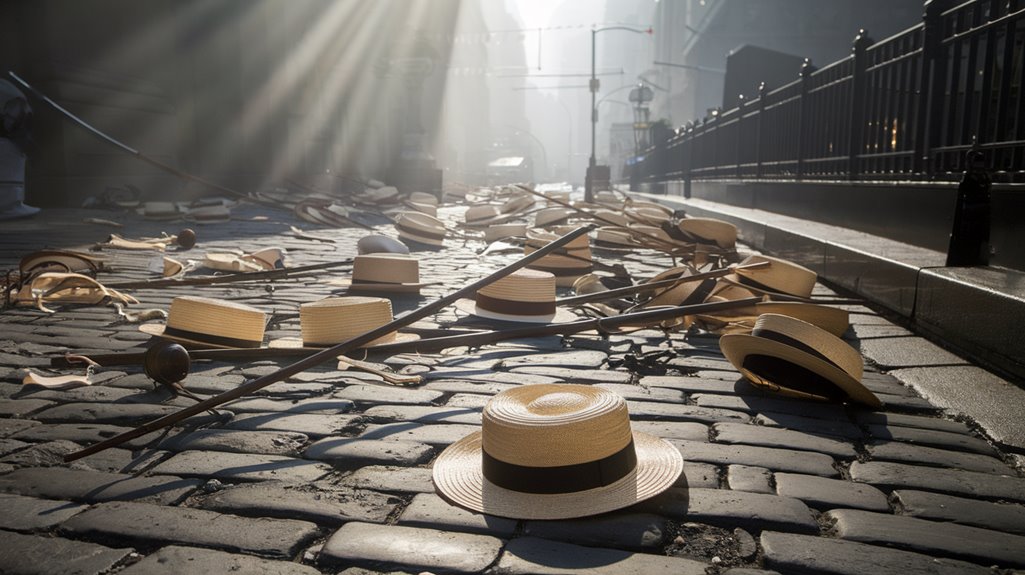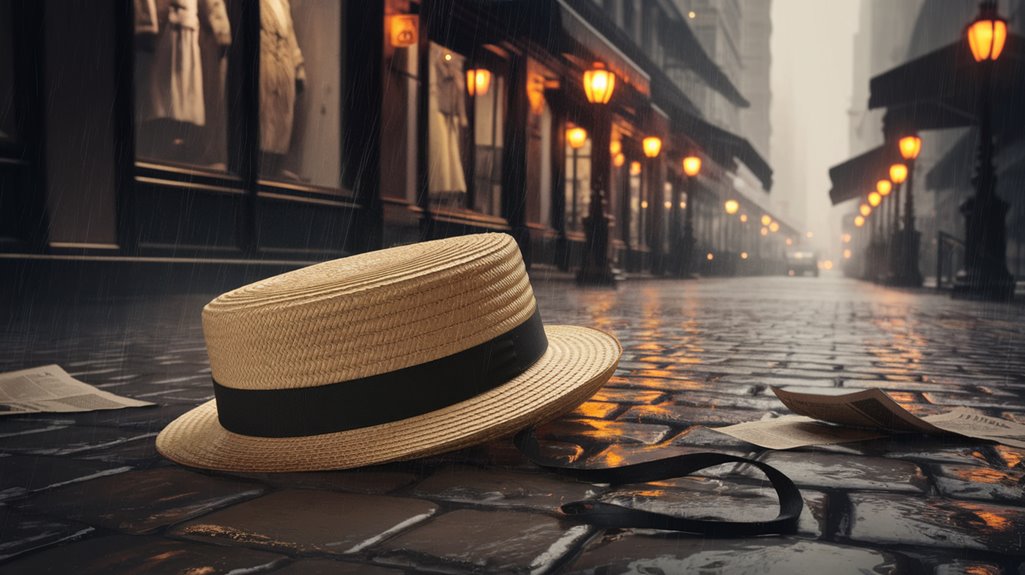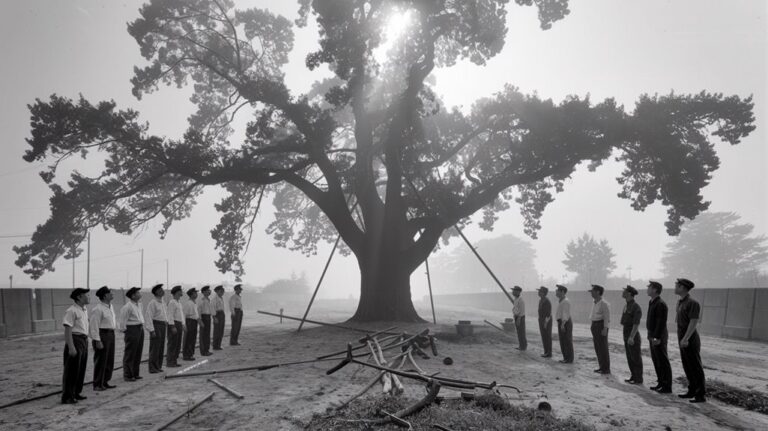The Straw Hat Riot: When Fashion Choices Sparked a New York Uprising
You might think fashion feuds are a modern phenomenon, but in 1922, New York City erupted in violence over something as simple as straw hats. What began as a tradition of switching from summer to fall headwear turned into eight days of street battles between young hooligans and citizens who dared to wear their straw hats past September 15. This bizarre moment in history reveals how fashion rules can spark unexpected social upheaval and expose deeper cultural tensions.
The Origins of Straw Hat Season and Its Social Rules
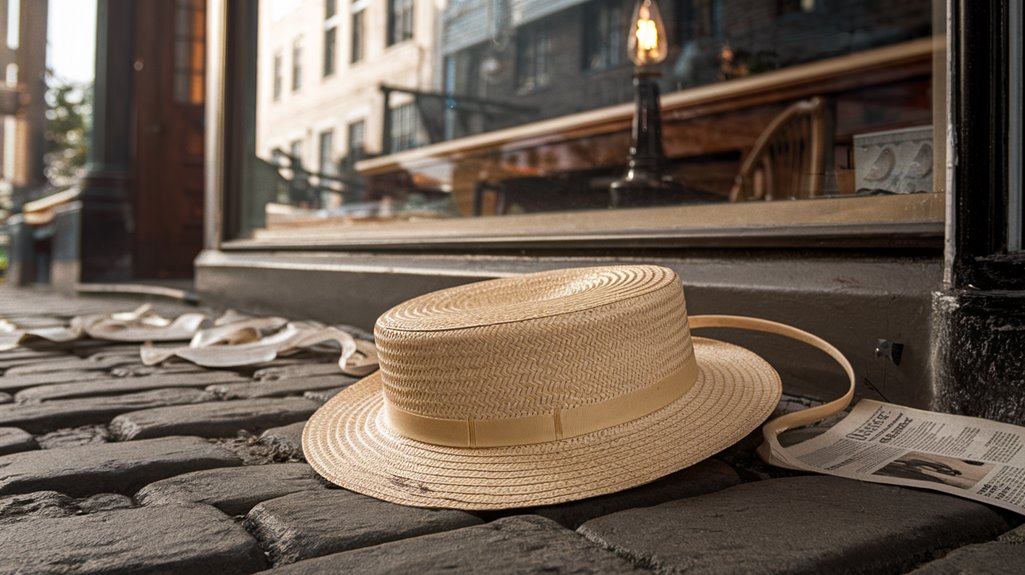
While straw hats had become a summer fashion staple by the early 1900s, their acceptance in urban society followed strict seasonal rules. Today's tradition of wearing light straw hats beginning at Easter continues this historical practice.
You'd need to switch from your lightweight straw boater to a felt or silk hat by September 15, or you'd face social consequences. This seasonal fashion shift wasn't merely a suggestion – it was an enforced cultural norm.
Straw hat etiquette emerged from 19th-century traditions when these summer accessories weren't even considered proper city wear. Wall Street stockbrokers would ceremonially destroy any remaining straw hats at the stock exchange to mark the seasonal transition.
By the early 20th century, they'd gained acceptance as appropriate businesswear, but only within specific timeframes.
If you dared to wear your straw hat past the deadline, you might find yourself targeted by youngsters who'd knock it off your head and stomp it – their way of maintaining social order.
Eight Days of Urban Chaos: How the Riots Unfolded
On September 13, 1922, what began as typical hat-snatching pranks erupted into unprecedented violence when Manhattan youths targeted factory workers' straw hats in the Mulberry Bend area.
The fashion symbolism of wearing straw after September 15 sparked a fierce youth rebellion, as gangs armed with nail-studded sticks prowled the streets, snatching and destroying hats.
You'd have witnessed the chaos escalate when a confrontation with dockworkers turned into a massive brawl on the Manhattan Bridge, bringing traffic to a standstill.
By the next evening, nearly 1,000 teenagers had joined the mayhem, particularly along Amsterdam Avenue.
The violence lasted eight days, sending several men to hospitals and overwhelming law enforcement. Those arrested typically chose to pay monetary fines rather than serve jail time.
Even off-duty police officers weren't safe from the mobs enforcing this unwritten fashion rule.
The incident followed a pattern of similar unrest, like the Pittsburgh mob in 1910 that had also targeted straw hat wearers.
Behind the Violence: Social Pressure and Cultural Norms
Beyond the surface-level chaos of hat-snatching, the Straw Hat Riots revealed deep-rooted social pressures that dominated 1920s American society. You can see how the rioters weren't just targeting hats – they were enforcing strict social conformity through intimidation and violence.
When men dared to wear straw after September 15, they faced a cultural backlash that could land them in the hospital. The incident turned into an eight-day upheaval that gripped the city in fashion-fueled tension.
What's particularly striking is how these arbitrary fashion rules held such power. The police's reluctance to intervene effectively shows how deeply ingrained these social norms were.
Even law enforcement seemed to accept that wearing the wrong hat at the wrong time deserved punishment. It's a stark reminder of how society's unwritten rules can spiral into dangerous mob mentality when conformity becomes more important than individual rights.
Media Coverage and Public Reactions
The media's role in the Straw Hat Riots proved both predictive and polarizing. You'll find that newspapers actively warned readers about September 15th's approaching deadline, heightening tensions before violence erupted.
Once the riots began, media analysis focused on the gangs of teenagers wielding spiked sticks and the growing wave of violence spreading through New York's streets. Even The New York Tribune, which documented the chaos extensively, would cease operations just two years later. The events required significant police intervention, particularly around the Manhattan Bridge where massive brawls erupted.
Public sentiment remained divided throughout the upheaval. While some New Yorkers defended the tradition as a necessary enforcement of social norms, others were horrified by the brutality and hospitalizations.
The police faced criticism for their slow response, and you can see how the incident sparked broader discussions about conformity.
What began as coverage of a fashion-based tradition ultimately became a cautionary tale about the dangers of enforcing arbitrary social rules through violence.
The Lasting Impact on Fashion and Society
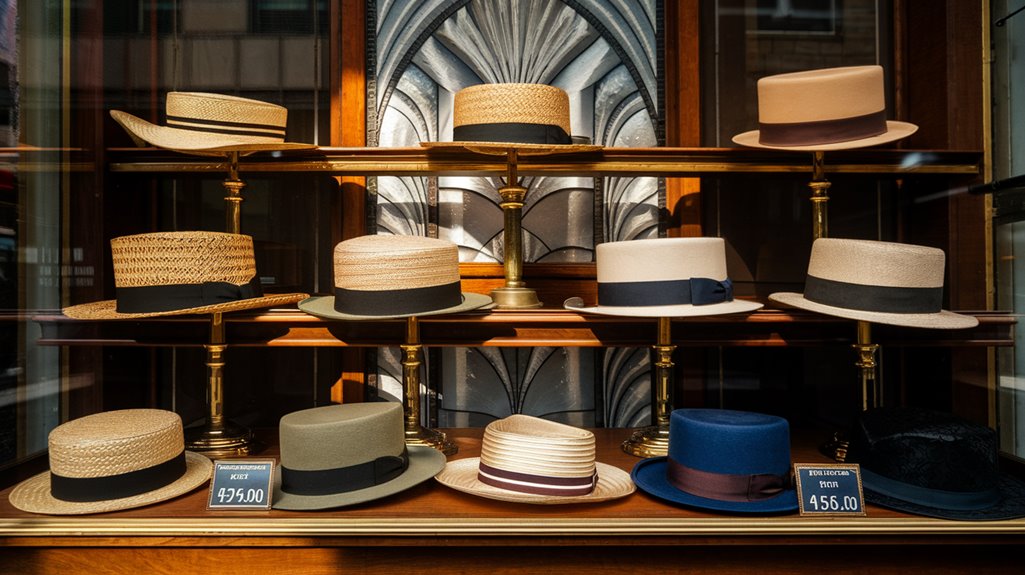
While fashion trends often come and go without incident, the Straw Hat Riots left an indelible mark on both American fashion culture and social behavior.
You can trace the fashion evolution that followed, as the once-popular boater hat gradually disappeared from men's wardrobes, especially after President Coolidge publicly ignored the September 15th cut-off date.
The cultural significance of these riots extends far beyond mere fashion choices. What began as friendly hat ribbing between acquaintances transformed into citywide violence that demonstrated how quickly social customs could spiral out of control.
You'll find their legacy in today's social media era, where public shaming and enforcement of social norms continue, albeit in digital forms.
The riots serve as a stark reminder of how arbitrary rules can escalate into violence when society places too much emphasis on conformity.
This historical event demonstrates that fashion isn't just about clothing—it's a powerful lens through which we can examine social control and cultural change.

